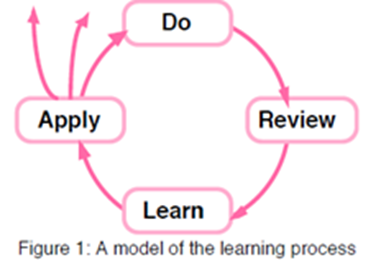Blended Learning
Since the enforced closure of schools in March 2020, staff at Cowbridge Comprehensive School have spent a good deal of time enhancing and adapting our blended learning provision. We have been able to trial a number of blended learning strategies and determine those that allow pupils to engage in active and effective learning. On this page, you will find practical information about blended learning as well as some tips to support your child when he/she is learning at home.
What is Blended Learning?
"At its simplest, blended learning is the thoughtful integration of classroom face-to-face learning experiences with online learning experiences." [Garrison and Kanuka, 2004]. At Cowbridge Comprehensive School, this means that time spent learning in the classroom will introduce key concepts, new content and skills; address misconceptions; answer questions; and, set clear expectations and guidelines for the work to be completed at home. However, it should be noted that the learning that takes place at home will take a variety of forms and will not be restricted to online provision.
To access our Blended and Distance Learning Policy, please click here.
What does effective learning look like?
Whether the learning that is taking place is happening in school in a formal lesson or happening at home through blended learning, it should be effective. Effective learning is an active process that connects past experience, present understanding and future knowledge. For learning to be effective, the pupils need to be engaged, motivated and be prepared to learn through thinking and applying; it is not a passive activity, on the pupils’ part, where the knowledge or skill is merely presented to them.
What this means, in practice, is taking part in activities that involve reflection, collaboration and ensure pupil responsibility. These kinds of activities are the most effective in ensuring a positive learning experience which enable pupils to make good progress.
This means that a learner should:
- do
- review
- learn
- apply

For further information about how pupils learn effectively, please click here.
To view some of the research used by staff to develop our blended learning approach, please click here.
How can I support my child’s learning at home?
To make the most out of supporting your child, it is important that they understand your role in helping them to learn. This may be achieved by implementing the following:
- Establish respectful relationships from the start by setting parameters and ground rules. Doing this can help avoid conflict when your child experiences barriers or difficulties during the learning process.
- Help your child to organise his/her time by establishing regular routines that fit in with life at home. Ensure time is built in for breaks and different activities, for example, exercise, cooking, games and crafts.
- Discuss with your child how he/she learns best and what needs to be done if difficulties are encountered. If your child understands that the learning process can sometimes be frustrating, he/she will be better equipped to deal with any peaks and troughs along the way.
- To ensure variety in the learning experience, encourage your child to learn and research in different ways. Remember, not all research happens online! Read books; talk to family and friends about their experiences; watch documentaries, etc.
- Check your child’s various Google Classrooms so that you are aware of the work that has been set and encourage him/her to engage with this work.
For further support on the use of Google Classroom, please click here.
For information on our learning continuity plan, please click here.
How can I create an effective learning environment at home?
You can encourage your child to be ready to learn by instilling in them good habits and routines. Here are some suggestions on creating an effective learning environment:
- set the tone for learning at home by always getting dressed early in the day;
- maintain/develop good eating habits by aiming for your 5 a day, having good portion control and following the principles of the healthy eating plate;
- maintain good working and rest hours - get a schedule that starts and finishes during the ‘working day’ and incorporates regular breaks;
- create a dedicated study space that is conducive to learning.
